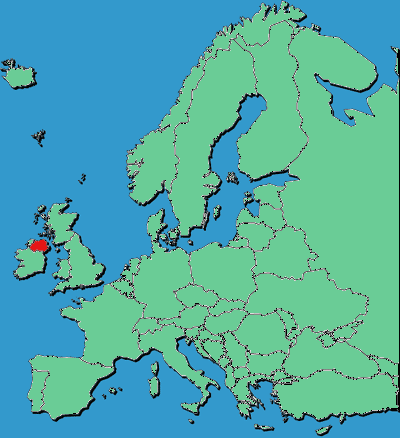
Circle the area on this map

C. Northern Ireland is the smallest of the four political divisions that make up the United Kingdom. England, Scotland, and Wales are the other divisions. Northern Ireland was created in 1921, when the island of Ireland was partitioned. The rest of island separated from the United Kingdom (UK) and became the Irish Republic. A majority of the people in Northern Ireland were unionists who wanted to stay in the UK.
A. With more than 344,000 people, Belfast is much larger than Londonderry with just under 85,000. McKee was killed nearly 21 years to the day after a 1998 peace treaty, known as the Good Friday Agreement, was signed, ending the Troubles, decades of Northern Ireland violence between unionists and nationalists who wanted the province to join the Irish Republic.
B. If Britain leaves the European Union, it could potentially need to reestablish customs controls and entry points on the border between Northern Ireland and the Republic of Ireland. A critical part of the Good Friday Agreement was opening that border which was militarized during the decades of violence.
D. Sectarian violence is fighting between different sects of a religion within a nation or community. In Northern Ireland, Protestant unionists and Catholic nationalists battled from 1969 to 1998. The conflict had roots going back the 1600s when Scottish and some English Protestants were brought in to replace ousted Irish Catholic farmers. Over the years, the province’s Protestant and Catholic communities became severely segregated.